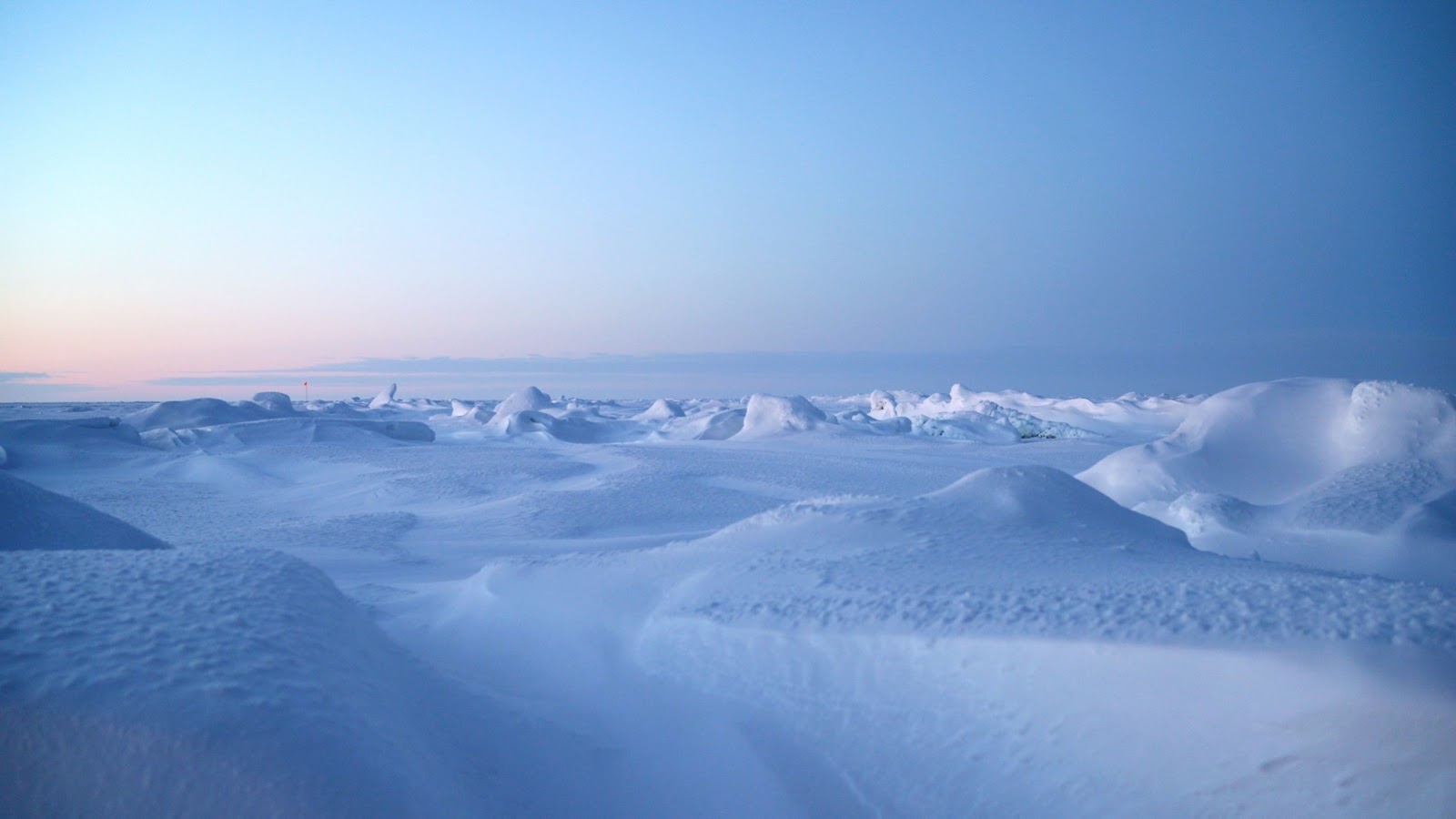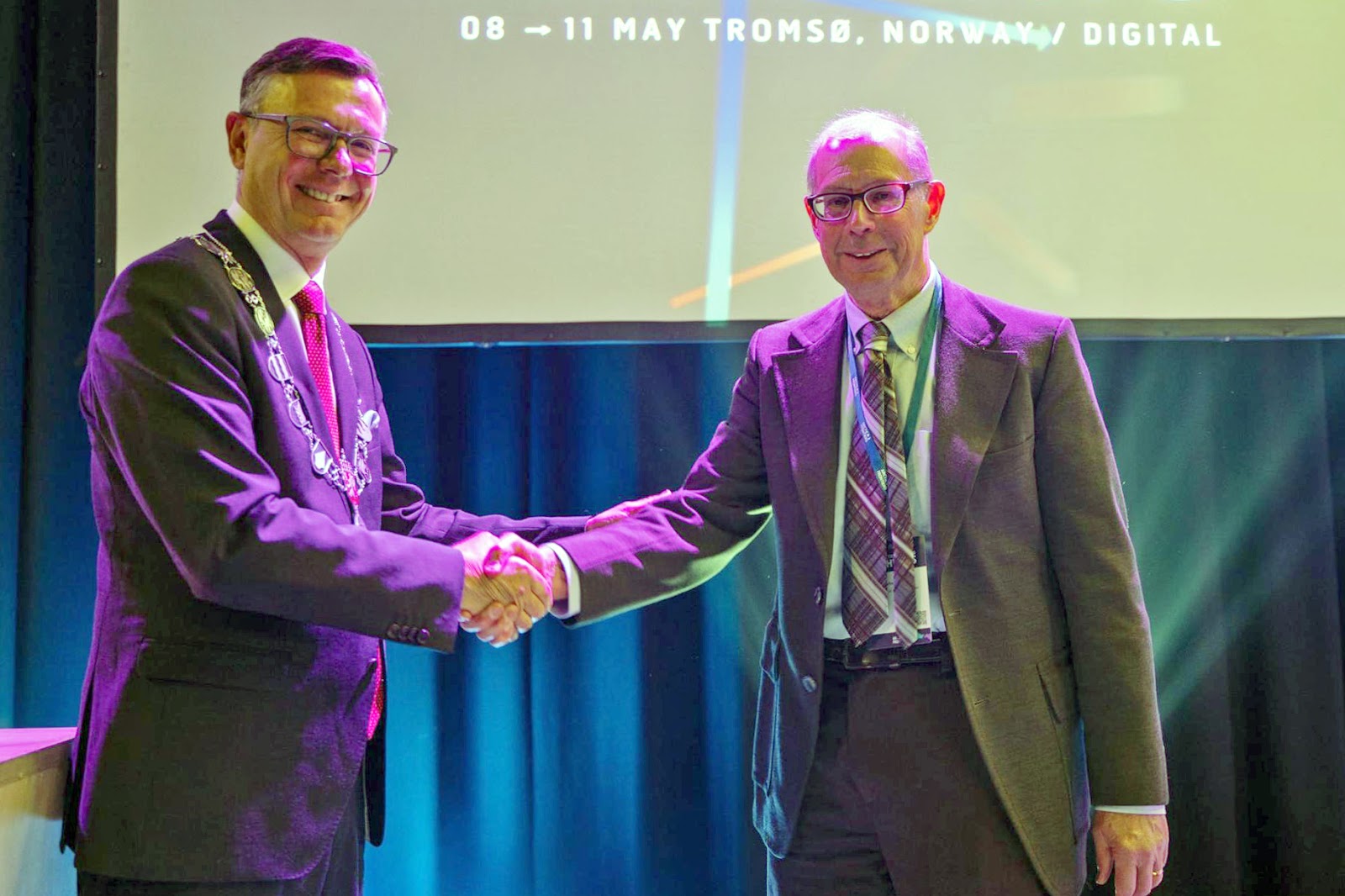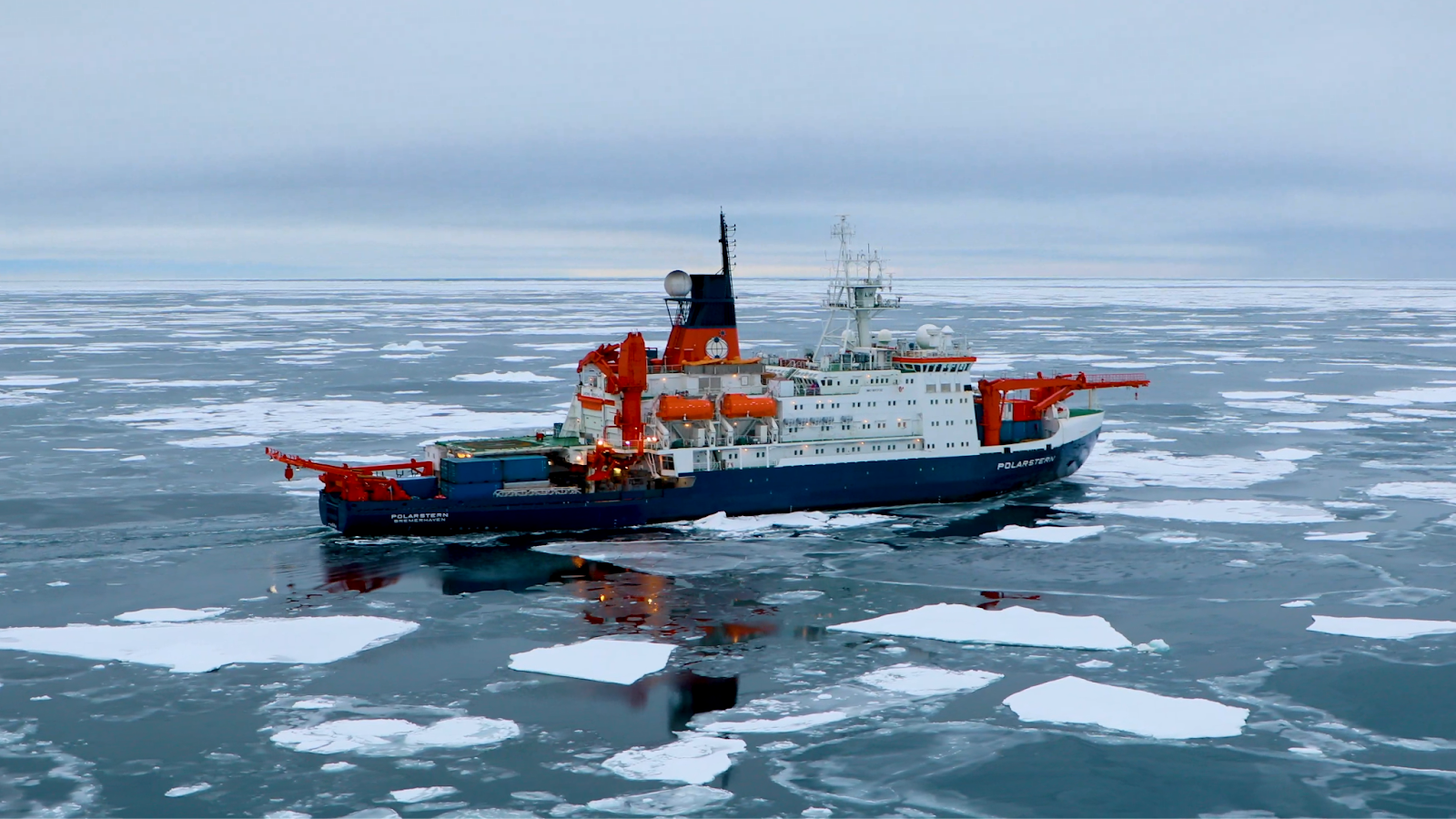Scientist-donor gathers world experts to see Arctic’s future
By Heather McFarland

Snow covers the sea ice during the year-long Multidisciplinary drifting Observatory for the Study of Arctic Climate expedition, which was carried out in 2019 and 2020 using the Polarstern, a German research icebreaker, in the central Arctic Ocean.
If you knew what the future held, how would you act? Would you change your behavior, advocate for new policies, make different investments? John Walsh intends to bring together University of Alaska Fairbanks’ Arctic experts with leading European scientists to give the public and decision-makers a glimpse at the Arctic by the end of the century.
The future isn’t set in stone, so the Arctic’s appearance in 2100 depends on global economics, technology, geopolitics and carbon emissions. Walsh intends to outline different climate scenarios if, for example, we continue on our current trajectory versus aggressively acting to reduce emissions.
His belief in the work and the expertise at UAF is so strong that he donated the funds to make the project happen. In November 2021, Walsh was awarded the prestigious Mohn Prize for his outstanding research in the Arctic. With it, he received roughly $230,000, all of which he donated back to research at the UAF International Arctic Research Center.
“The vision is to come up with this document that indicates what the Arctic could look like in 2100,” said Walsh, chief scientist at the International Arctic Research Center. “We’re setting out to look at the Arctic’s future under different carbon emission scenarios. One advantage of this framework is that it shows how people can make a difference in how the Arctic will look.”

John Walsh, right, receives the 2022 Mohn Prize at the Arctic Frontiers Conference in Tromsø, Norway, from Dag R. Olsen, Director of the University of Tromsø — The Arctic University of Norway.
The report will answer questions such as “What are the consequences for the Arctic if we don’t meet the Paris Agreement, with its goal of limiting global warming to 2.7°F (1.5°C)?”
Scientists already know that sea ice decline in the Arctic is likely to stabilize if we meet the Paris Agreement target. But if the world warms more than 2.7 degrees, sea ice will go away in the summer, opening shipping lanes and altering Arctic ecosystems in unknown ways. Walsh’s report will provide similar insights about other aspects of the Arctic.
Though these types of forward-looking reports exist for the entire world, the Arctic is warming several times faster than the rest of the globe. Given the Arctic’s role as a bellwether of climate and environmental change, Walsh wants to “zero in on the region.” Surrounded by colleagues in permafrost, oceanography, glaciers, climate and social science, Walsh felt that UAF was the right team to take on the initiative.
“UAF has Arctic environmental research covered in all the disciplines,” emphasized Walsh. “That pool of expertise just facilitates collaboration and what you can do.”
To complement UAF’s emphasis on the North American Arctic, Walsh brought in colleagues from Norway’s Arctic University.
“The Norwegians, who are the providers of the [Mohn Prize], have actually done this type of forward-looking study, an attempt to paint a picture of the future environment for Norway based on climate model output and other sources of information,” explained Walsh.
Walsh and his team will rely on a new suite of climate models that look beyond the atmosphere to include the state of the ground, oceans, glaciers and ice sheets.
They’ll also include information about how future extreme events may differ under various emissions scenarios. Increased wildfire, icing and wind events, avalanches, unstable terrain and drought are manifestations of climate change with a severe impact on humans and ecosystems. The emphasis on extreme events ties into research already happening at UAF and by Walsh’s Norwegian partners.
Walsh is motivated to seek out creative approaches and new collaborations to help prevent a destructive future for the region he has dedicated his career to understand. Working with the UA Foundation on this project has enabled him to outline an effort that he feels is the most likely to make a difference by highlighting alternative Arctic futures.
“I think there’s value in a donor having their funding used for a specific purpose rather than hoping the information comes out through research sponsored by an agency or private company, which often have their own agendas,” said Walsh.
Walsh’s donation through the Mohn Prize means that “the Arctic in 2100” report will happen faster and more efficiently, with fewer strings attached and with the very best people cherry-picked for the job.

The Polarstern, a German research icebreaker, travels through ice floes in the eastern Arctic Ocean during the Nansen and Amundsen Basins Observational System expedition in fall 2021.
